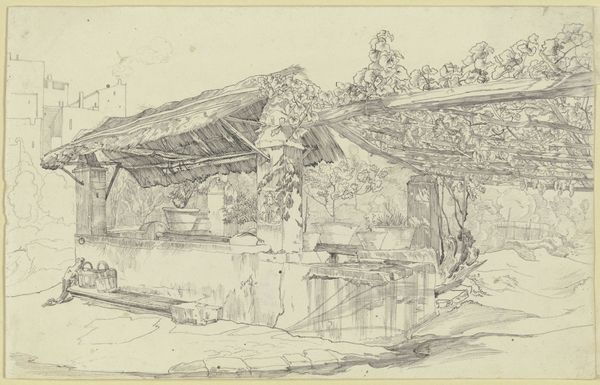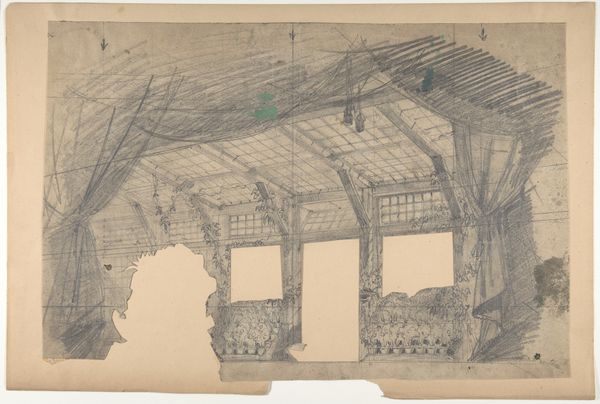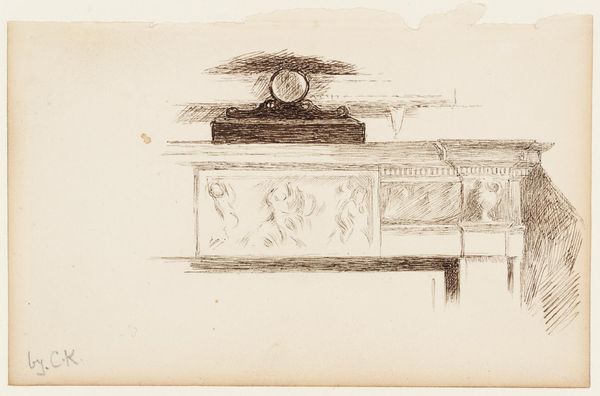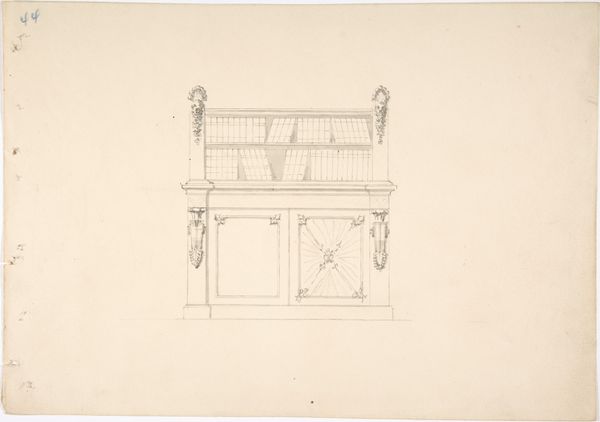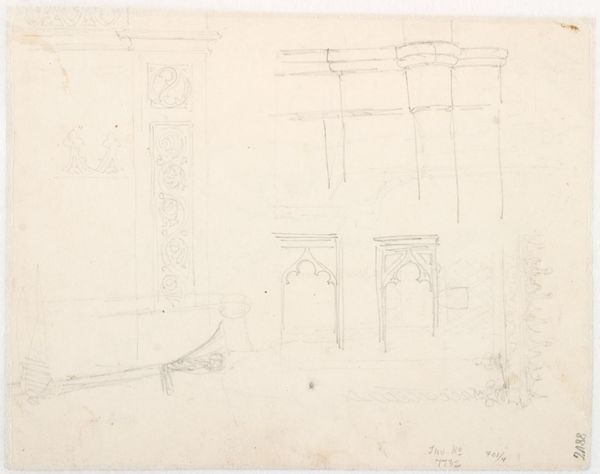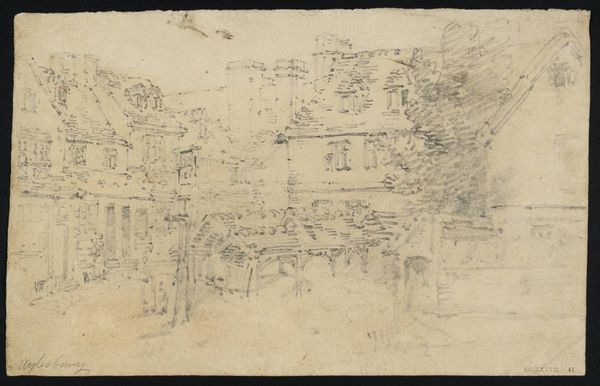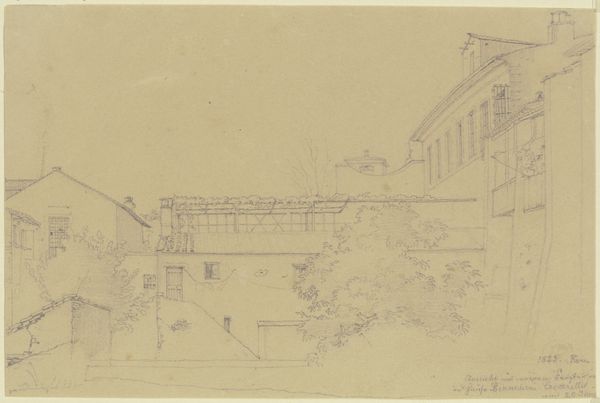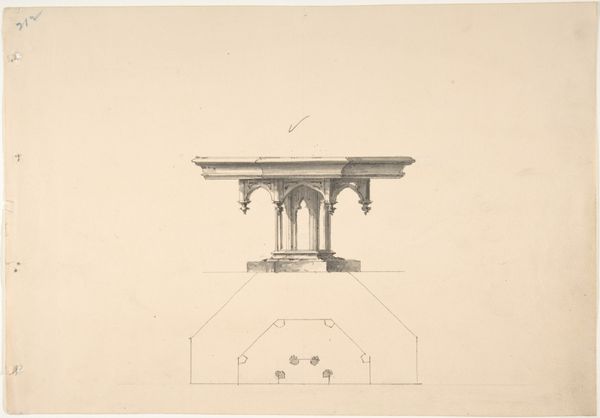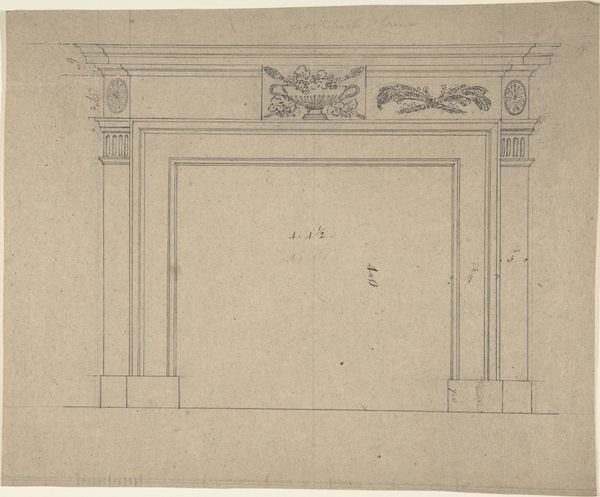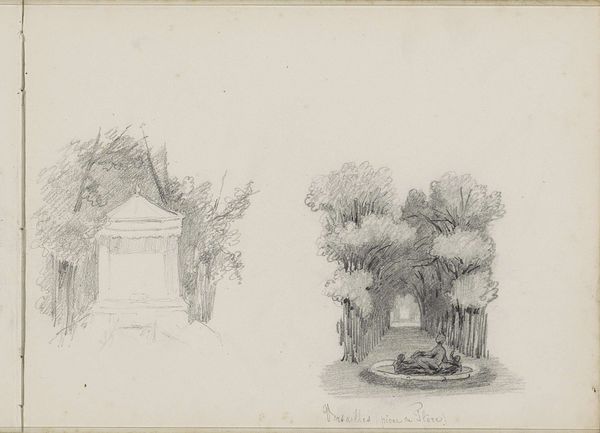
Copyright: Public Domain
Editor: Friedrich Maximilian Hessemer created this etching, "Temple complex in Tentyra", sometime between 1813 and 1829. It has a certain delicate, almost ghostly quality to it. What do you see when you look at this etching? Curator: As a materialist, I see not just the image but also the means of its creation. This etching reveals a fascination with ancient Egyptian architecture, particularly its forms, but through the lens of Neoclassicism. Think about the materials involved: the paper, the etching needle, the acid. How did the availability and cost of these materials shape the artist's process? Editor: That’s interesting. I was more focused on the scene itself. I hadn't considered the etching process in that much detail. Curator: Exactly. Hessemer is documenting, yes, but he's also engaging in a dialogue with these ancient forms using the tools and aesthetics of his time. He’s choosing to reproduce the temple, which means creating his own, new product through this conscious action. Editor: So the very act of etching it changes its context, in a way? By recreating the material using different processes? Curator: Precisely. It turns it into a commodity to be traded. The act of observing becomes an act of appropriation, of re-contextualizing labor across different eras and societies. It almost invites a study of the material culture surrounding both the original temple complex, and the creation of this piece itself. What do you make of the line work? Editor: It feels very precise. But now I’m wondering about the labor involved. I mean, how long would this have taken Hessemer, and who was involved in printing it? Thanks for pointing that out, that actually gives the piece new layers of meaning to me. Curator: That’s the beauty of art; there are always new connections to be made. Thinking about the material conditions behind the art helps unlock those perspectives.
Comments
No comments
Be the first to comment and join the conversation on the ultimate creative platform.

